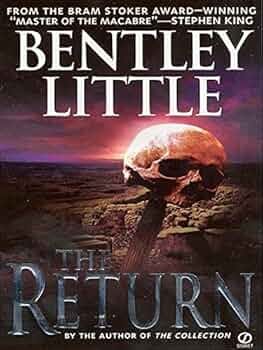The Return (2002) by Bentley Little
Readers unfamiliar with The Return may wish to read my notes only after reading the novel
Bentley Little’s 2002 novel The Return offers us an imperilled small town and an encroaching evil.
Where a later work like Behind (2024) locates its menace in offset (or displacement), The Return drills downwards, releasing its horrors from the Arizona soil: from fragments and archaeological treasures that have been dug up and placed on display – thereby positing history itself not as a settled past but as a malignant, resurgent power.
The narrative deploys a characteristic strategy of converging protagonists, each emblematic of a certain strand of "unmoored individualism" prevalent among its WASP cast. Glen, a man in his forties, newly disengaged from familial obligations by his mother’s death, embarks on westward drift, his initial self-conception filtered through the TV heroism of the Michael Parks vehicle “Then Came Bronson” – a poignant, if somewhat jejune, fantasy of autonomous reinvention.
G…
Keep reading with a 7-day free trial
Subscribe to Reading After Dusk to keep reading this post and get 7 days of free access to the full post archives.

